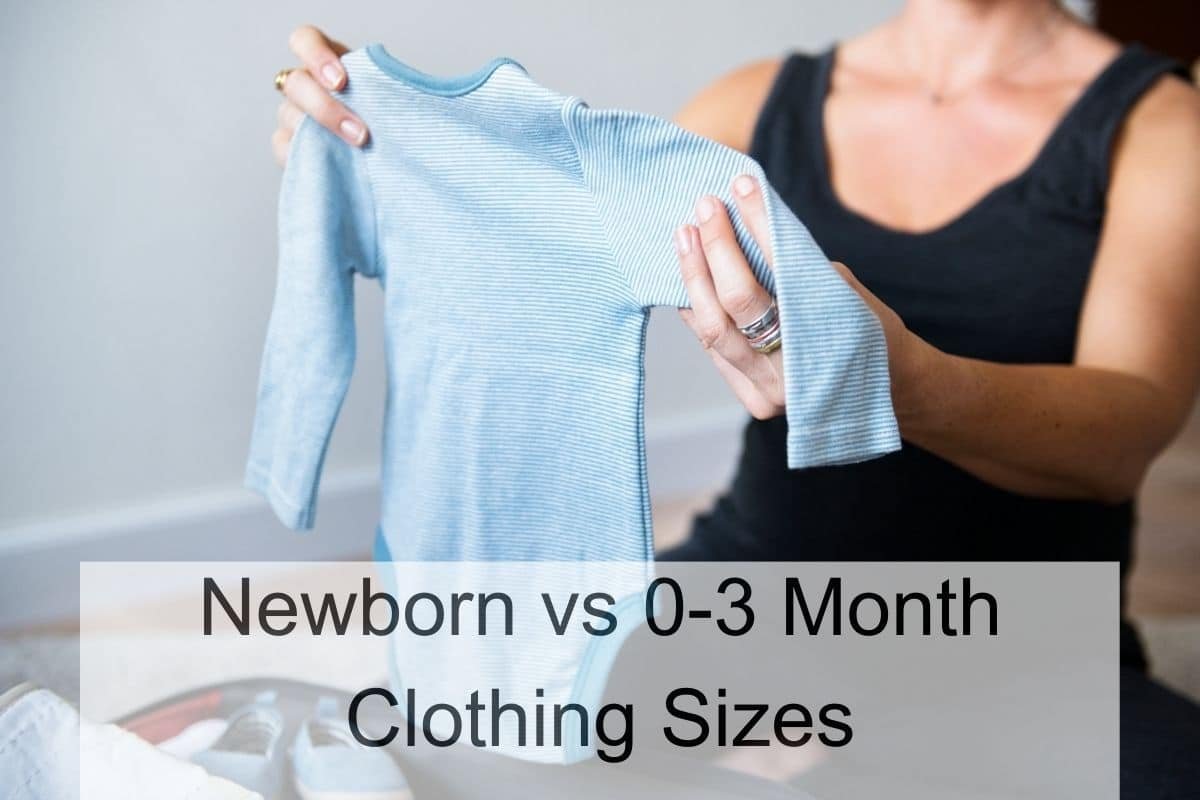As a new parent, one of the most exciting things is shopping for baby clothes. However, with so many different sizes and styles available, it can be overwhelming to figure out what to buy. One common question that new parents have is what the difference is between newborn and 0-3 month clothing sizes.

It’s important to note that there isn’t a universal standard for baby clothing sizes, so sizes can vary slightly depending on the brand. However, as a general rule of thumb, newborn sizes are designed for babies who weigh up to 7 pounds, while 0-3 month sizes are designed for babies who weigh between 7 and 12 pounds. Keep in mind that babies grow quickly during their first few months, so it’s a good idea to have a mix of both sizes on hand.
Another factor to consider when shopping for baby clothes is the style of the clothing. Some brands offer footed pajamas and onesies in both newborn and 0-3 month sizes, while others only offer certain styles in one size or the other. It’s a good idea to check the size chart for each brand before making a purchase to ensure that you’re getting the right size and style for your baby.
Understanding Newborn and 0-3 Month Clothing Sizes
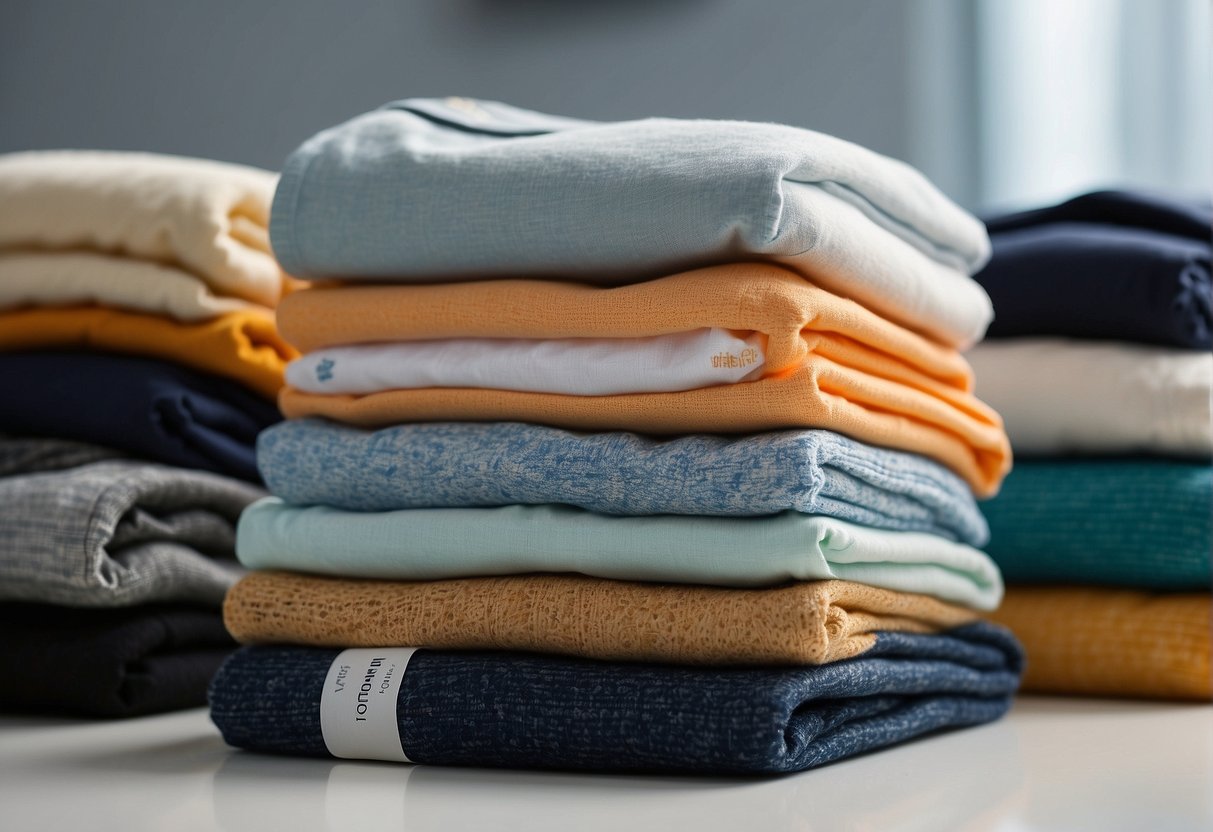
As a parent, it can be confusing to figure out what size clothing to buy for your newborn. Here are a few things to keep in mind when shopping for newborn and 0-3 month clothing.
Size Chart Basics
Newborn clothing is designed for babies who weigh between 5 and 8 pounds and are up to 21.5 inches long. On the other hand, 0-3 month clothing is designed for babies who weigh between 8 and 12.5 pounds and are between 21.5 and 24 inches long. Keep in mind that every baby is different, so these size ranges are just a general guide.
It’s also important to note that some baby clothing brands only show the higher end of the sizing range on their clothes. For example, if you see a onesie labeled 9M, it really means it’s a 6-9M size. So, make sure to check the sizing chart on the label to ensure you’re buying the right size for your baby.
Labeling Differences
One of the biggest differences between newborn and 0-3 month clothing is the labeling. Newborn clothing is usually labeled as “NB,” while 0-3 month clothing is labeled as such. This can be confusing, but it’s important to remember that NB is smaller than 0-3 months.
Another difference to keep in mind is the length of the clothing. Newborn clothing is generally shorter than 0-3 month clothing. For example, a newborn onesie may be 11.5 inches in length from head hole to butt snaps, while a 0-3 month onesie may be 14 inches long.
Factors Affecting Size Choices
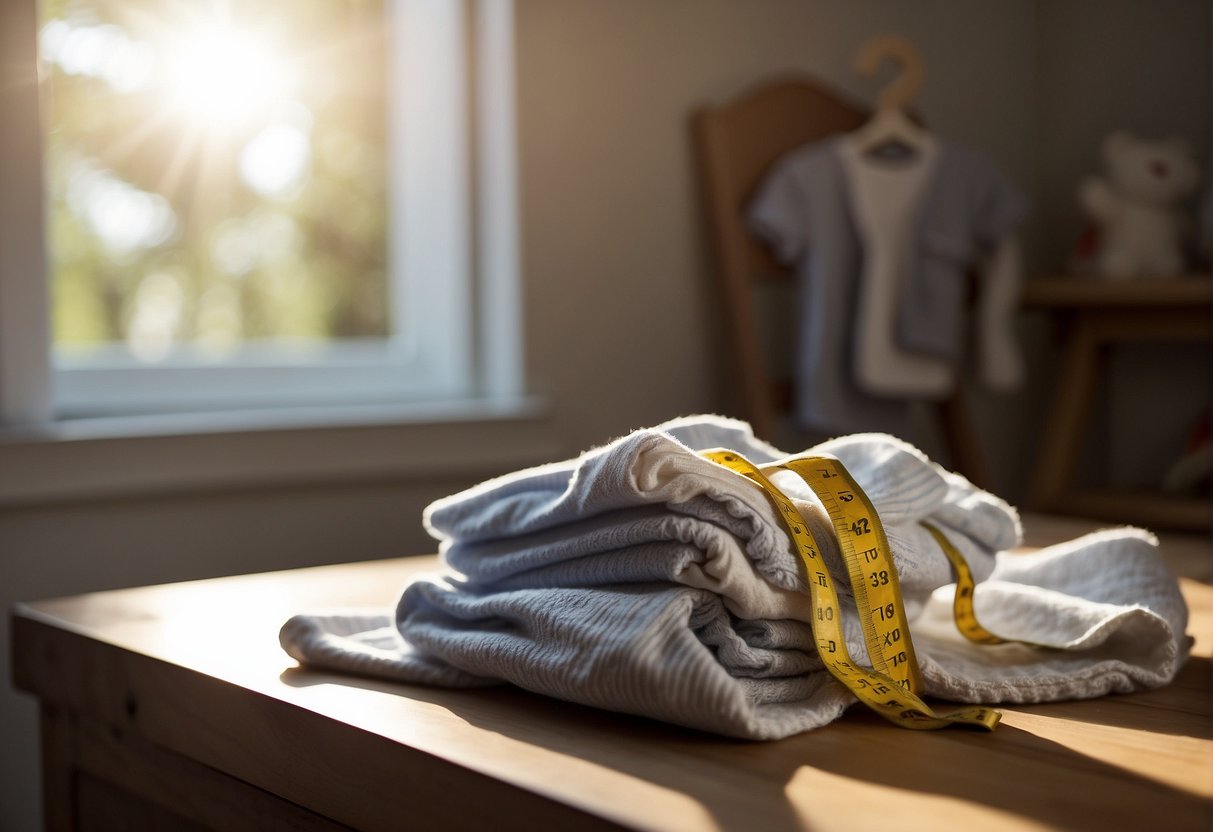
As a new parent, choosing the right clothing size for your newborn can be a bit confusing. There are several factors to consider when selecting the right size for your little one. Here are a few things to keep in mind:
Baby’s Weight and Length
One of the most important factors to consider when selecting the right size for your newborn is their weight and length. Most brands offer a size chart that provides weight and length measurements to help you make the right choice. It’s essential to choose the right size to ensure that your baby is comfortable and their clothes fit well.
Brand Sizing Variations
It’s important to note that different brands may have variations in sizing, making it essential to check the size chart for each brand before making a purchase. For instance, some brands may label their clothing as “Newborn” or “0-3 Months,” while others may use weight or length measurements. It’s crucial to check the size chart to avoid buying clothes that are too small or too big for your baby.
Seasonal Considerations
When selecting clothing sizes for your newborn, it’s also essential to consider the season. For instance, if your baby is due in the summer, you may want to opt for lighter clothing made from breathable fabrics. On the other hand, if your baby is due in the winter, you may want to choose warmer clothing made from thicker fabrics to keep them cozy and comfortable.
Practical Tips for Choosing the Right Size
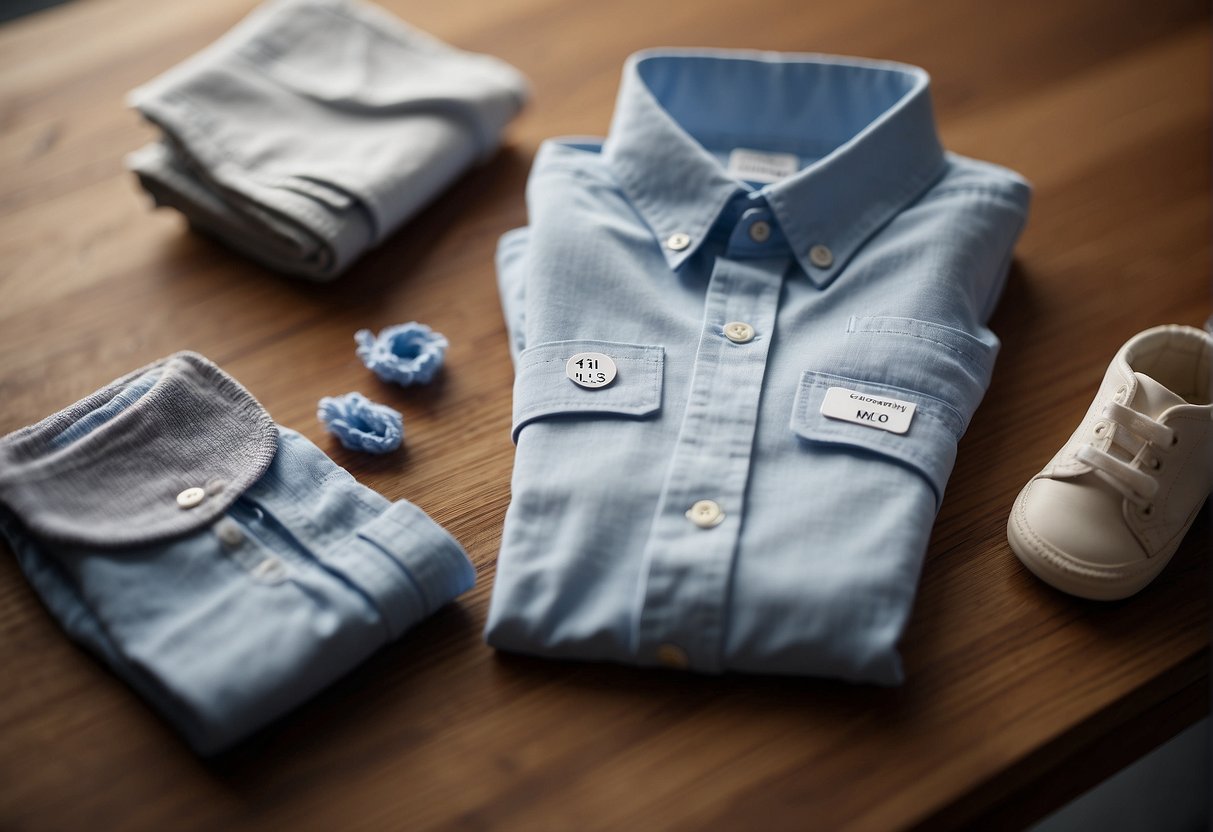
As a new parent, it can be overwhelming to choose the right size of clothing for your newborn. Here are some practical tips to keep in mind when selecting between newborn and 0-3 month sizes.
Anticipating Growth
Babies grow rapidly in their first few months, so it’s essential to consider how long your baby will fit into a particular size. While newborn sizes are designed for brand-new babies, 0-3 month sizes offer a bit more room to grow. If you’re unsure, consider purchasing a few items in both sizes to ensure you have options as your baby grows.
Comfort and Mobility
Choosing the right size is not only about the fit but also the comfort and mobility of your baby. It’s essential to select clothing that is not too tight or too loose, as it can hinder your baby’s movements and cause discomfort. Opt for clothing that allows your baby to move freely and comfortably.
Accessibility and Diaper Changes
Another crucial factor to consider when choosing the right size is accessibility for diaper changes. Newborns need frequent diaper changes, and it’s essential to select clothing that makes it easy to change their diaper without having to remove their entire outfit. Consider clothing with snaps or zippers that allow easy access to the diaper area.
Essential Clothing Items for Newborns and 0-3 Months
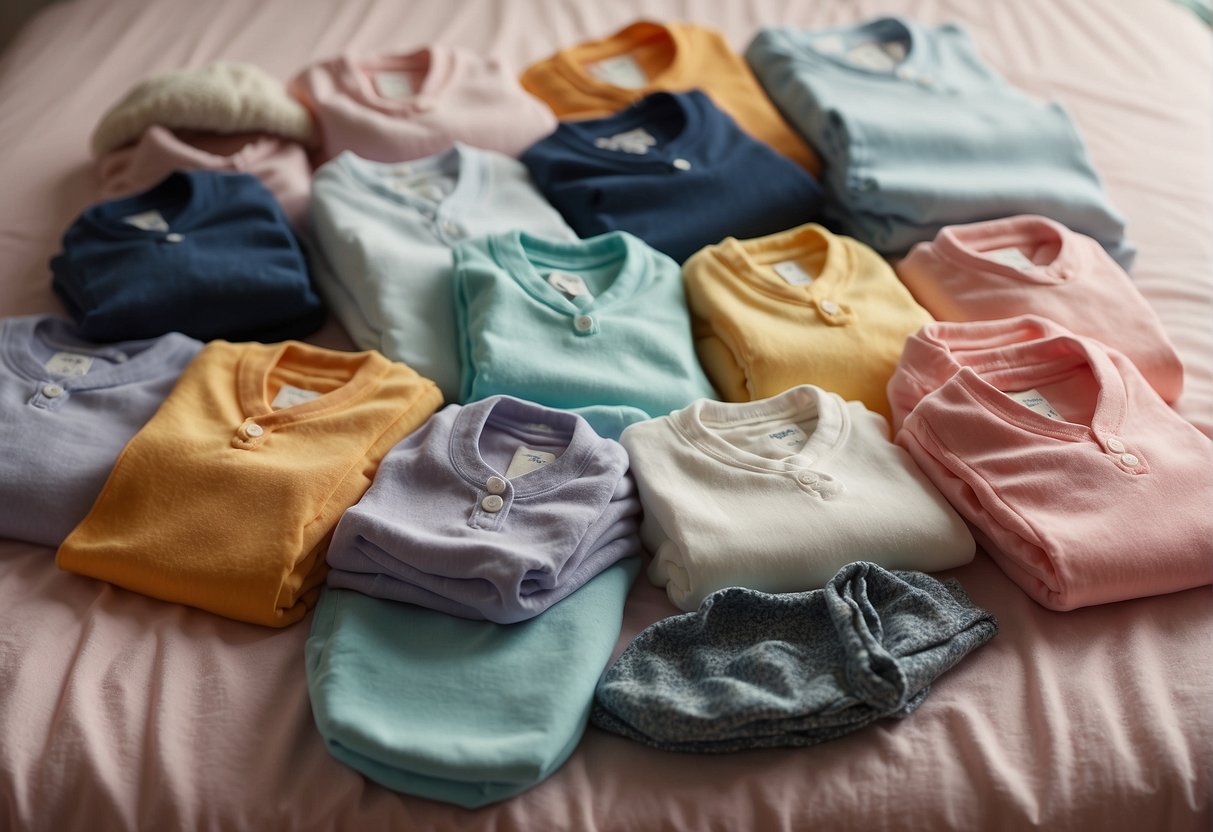
As a new parent, it can be overwhelming to figure out what clothing items your newborn baby needs. It’s important to keep in mind that babies grow quickly, so you don’t need to buy too many of each item. Here are some essential clothing items for newborns and 0-3 months.
Bodysuits and Onesies
Bodysuits and onesies are a must-have for any newborn baby. They are comfortable, easy to put on and take off, and come in a variety of styles and colors. It’s recommended to have at least 7-10 bodysuits or onesies in each size. Make sure to choose ones with snaps at the bottom for easy diaper changes.
Sleepwear
Newborns spend most of their time sleeping, so it’s important to have comfortable sleepwear for them. Footed pajamas or sleepers are a great option as they keep your baby warm and cozy. It’s recommended to have at least 5-7 sleepers in each size. Make sure to choose ones with zippers instead of snaps as they are easier to use during nighttime diaper changes.
Outerwear
Depending on the weather, you may need to have some outerwear for your newborn baby. A few items to consider include a jacket, a hat, and mittens. It’s recommended to have at least one jacket in each size. Choose a jacket that is warm but not too bulky for easy movement. A hat is essential to keep your baby’s head warm, and mittens will keep their hands warm and prevent them from scratching themselves.
Care and Maintenance of Baby Clothes
As a new parent, it’s essential to know how to care for and maintain your baby’s clothes to keep them looking and feeling their best. Here are some tips to help you keep your baby’s clothes clean and in good condition.
Washing Instructions
When washing your baby’s clothes, it’s important to use a gentle detergent that is free of harsh chemicals. I recommend using a detergent that is specifically designed for babies, such as Dreft or Seventh Generation.
It’s also important to separate your baby’s clothes by color and fabric type. Sort them into piles of whites, lights, and darks, and wash them separately. This will help prevent colors from bleeding and keep your baby’s clothes looking bright and new.
When it comes to drying your baby’s clothes, I recommend air-drying them whenever possible. This will help prevent shrinkage and damage to delicate fabrics. If you do need to use a dryer, use a low heat setting and remove the clothes as soon as they are dry.
Storage Solutions
Proper storage is also important for maintaining your baby’s clothes. I recommend using plastic storage containers with tight-fitting lids to keep out dust and pests. Be sure to label each container with the size and type of clothing inside to make it easy to find what you need.
To prevent wrinkles, I recommend folding your baby’s clothes neatly before storing them. You can also use hangers for larger items like dresses and jackets.
Finally, be sure to check your baby’s clothes regularly for stains and damage. Treat stains promptly and mend any tears or holes to keep your baby’s clothes looking their best.

